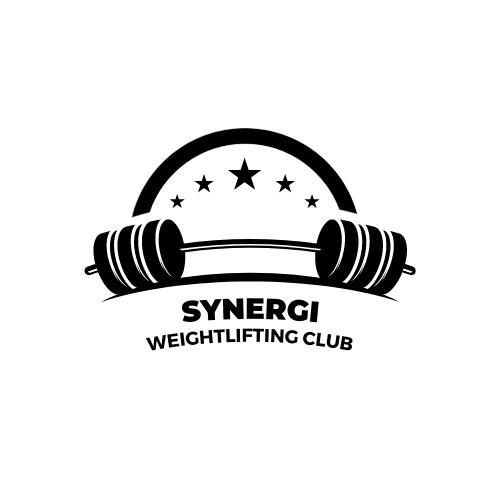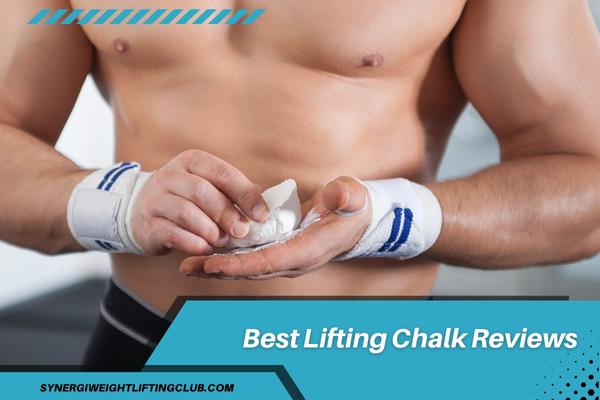Table of Contents
Best Weight Lifting Chalk Reviews, Ratings, Tips, and Guides for 2023 in the UK
Welcome to our Best Lifting Chalk Reviews, Ratings, Tips and Guides for 2023 in the UK. In this article, we will help you find the best lifting chalk for your needs by looking at a range of different products from leading brands. We’ll also provide helpful tips on how to use lifting chalk correctly and safely, as well as offer advice on the best way to get maximum benefit from your purchase. Hopefully, after reading this article, you’ll be able to find the ideal lifting chalk for your next big lift!
Top 10 Lifting Chalk to Buy in 2023
Below is the list of top 10 Lifting Chalk that you can have a look at and buy. Check one by one carefully before purchasing.
[content-egg-block template=top_listing]
*Note: Score is based on our AI score (Editor’s choice and rating)
What is Lifting Chalk?
Lifting chalk (also known as weightlifting or gymnastics chalk) is a type of powdered magnesium carbonate and/or other absorbent material that is used to create a thin coating of friction between your hands and the weights you’re lifting. This helps reduce moisture, prevent slipping and improve grip strength. It’s commonly seen in gyms, powerlifting competitions and even CrossFit boxes.
What Are the Different Types of Lifting Chalk
Lifting chalk is a type of gym equipment that is used to improve grip strength. There are many different types of lifting chalk, each with its own advantages and disadvantages.
The most common type of lifting chalk is magnesium carbonate. This type of chalk is cheap and effective, but it can be difficult to apply evenly and it can cause skin irritation.
Another popular type of lifting chalk is calcium carbonate. This type of chalk is more expensive than magnesium carbonate, but it applies more evenly and doesn’t cause skin irritation.
If you’re looking for the absolute best grip strength, then you should consider using liquid chalk. Liquid chalk provides the best grip possible, but it can be messy and difficult to apply evenly.
How Does Lifting Chalk work?
Lifting chalk is a type of magnesium carbonate that is used by weightlifters, gymnasts, and other athletes to improve their grip. The chalk helps to absorb sweat and moisture, which can make gripping the bar more difficult.
When lifting chalk is applied to the hands, it creates a dry environment that helps prevent slipping. The chalk also provides a small amount of friction, which can help lifters hold on to the bar for longer periods of time.
Lifting chalk is typically sold in small blocks or balls that can be broken up and applied to the hands as needed. Chalk can also be purchased in liquid form, which can be sprayed on the hands or onto weightlifting equipment.
Benefits of Lifting Chalk?
When it comes to lifting weights, every little bit counts. That’s why many weightlifters and bodybuilders use chalk to help them get a better grip on the barbell or dumbbell. Chalk provides a temporary increase in friction between your skin and the weight, which can help you lift more weight or perform more reps.
In addition to improving your grip, lifting chalk can also help to prevent calluses and blisters. When you have a good grip on the weight, you’re less likely to slide around and put unnecessary stress on your hands. This can help to keep your hands healthy and free from painful injuries.
So if you’re looking for a way to boost your performance in the gym, don’t forget about lifting chalk. It’s an inexpensive and easy way to get an edge on your workout.
Is Lifting Chalk Safe?
Yes, lifting chalk is generally safe for most people. However, if you have sensitive skin, you may want to test it on a small area first to see if you have any reaction. Also, be sure to wash your hands after using lifting chalk, as it can be drying to the skin.
Factors to Consider Before Buying Lifting Chalk?
If you are new to the sport of weightlifting, you may be wondering what kind of chalk is best for your needs. There are a few factors to consider before purchasing lifting chalk.
The first factor to consider is the type of lifting you will be doing. Powerlifting and Olympic lifting require different types of chalk. Powerlifters need a chalk that will provide a good grip for their hands during the deadlift, while Olympic lifters need a chalk that will help them keep their grip on the barbell during the snatch and clean and jerk.
The second factor to consider is the brand of chalk. There are many different brands of lifting chalk on the market, and each has its own unique properties. Some brands of chalk are more durable than others, while some provide a better grip. It’s important to find a brand that you trust and that works well for your needs.
The third factor to consider is the price. Lifting chalk can range in price from a few dollars to over $100. It’s important to find a balance between quality and price when selecting lifting chalk. There are many high-quality chalks on the market that won’t break the bank.
When considering these factors, it’s also important to keep in mind your personal preferences. Some lifters prefer a certain type or brand of lifting chalk, while others don’t care as long as it gets the job done. Ultimately, the best lifting chalk for you is the one that works best for your needs.
How to Use Lifting Chalk?
Lifting chalk is a type of magnesium carbonate that is used by weightlifters and gymnasts to improve their grip. Chalk can be bought in either block or powder form. Most gyms will have a chalk bucket that you can use, but you can also buy your own chalk ball or chalk bag to keep with you.
To use lifting chalk, simply rub it on your hands until they are evenly coated. You can also dip your fingers into the chalk bucket and then shake off the excess. The goal is to get a light coating of chalk on your hands so that you don’t leave a messy residue behind.
If you’re using powder chalk, be sure to tap your hands together before gripping the bar. This will help to distribute the chalk evenly. When using block chalk, you can rub it directly onto your palms or use a piece of sandpaper to create a finer powder.
Once your hands are coated with lifting chalk, make sure to grip the bar tightly and spread your fingers wide. This will help ensure that you have a good grip on the bar and won’t slip during your lift.
Lifting chalk can also be used on your feet to help improve your footing on slippery surfaces. Simply rub the chalk onto the bottoms of your shoes or socks and then put them on. The chalk will help to create a more secure grip so that you don’t slip while lifting weights or performing other exercises.
Pros and Cons of Lifting Chalk
Lifting chalk has a number of pros and cons that should be considered before using it.
On the plus side, lifting chalk can help to improve grip strength and prevent slippage during lifts. It can also be used to mark your hands for better grip placement. Additionally, some lifters find that using chalk can help them to focus and stay “in the zone” during their workout.
On the downside, lifting chalk can be messy and difficult to clean up. It can also cause irritation to the skin, especially if you have sensitive skin. If you are allergic to magnesium carbonate, then you should avoid using lifting chalk altogether.
Frequently Asked Question
1.What is the best lifting chalk?
There is no definitive answer to this question as everyone’s needs will vary. However, we would recommend looking for a chalk that is comfortable to grip, doesn’t leave your hands feeling dry or chalky, and provides a good amount of coverage.
2. How do I apply lifting chalk?
Again, there is no one-size-fits-all answer to this question. Some people prefer to apply a small amount of chalk to their hands and then rub it in, while others prefer to dunk their hands into a bowl of chalk. Experiment until you find what works best for you.
3. How often should I reapply lifting chalk?
This will depend on how much you are sweating and how long your workout lasts. Generally speaking, you should reapply chalk every few sets or as needed to keep your hands dry and prevent them from slipping on the bar.
4. Will lifting chalk damage my skin?
No, lifting chalk is not harmful to your skin. However, some people may find that it dries out their hands or leaves them feeling chalky. If this is the case, you can try using a light moisturizer after your workout to help replenish lost moisture.
5. Can I use lifting chalk on other equipment?
Yes, you can use lifting chalk on other workout equipment, such as dumbbells, kettlebells, and pull-up bars. Just be sure to wipe down the equipment after use to prevent the chalk from building up and becoming difficult to remove.
Conclusion
We hope our buying guide has helped you find the best lifting chalk for your needs. When it comes to choosing the right chalk, there are a few things you need to keep in mind such as the type of material, the size of the chalk, and the price. With so many options on the market, it can be hard to know where to start but we hope this guide has given you a good foundation. Thank you for reading and happy lifting!
I’m a personal trainer who specializes in weightlifting. I got into this line of work because I love the challenge and satisfaction of helping someone achieve their fitness goals.
I’m also an athlete myself, and have competed in weightlifting competitions all over the world. This has given me a wealth of experience and knowledge that I can share with my clients.
Finally, I’m a blogger, and have written extensively about health, fitness, and nutrition.
Thanks for reading !

